TIP: This Is Panama
A rising star in Central America has a rare opportunity: to develop in a way that respects its land, water, and people.
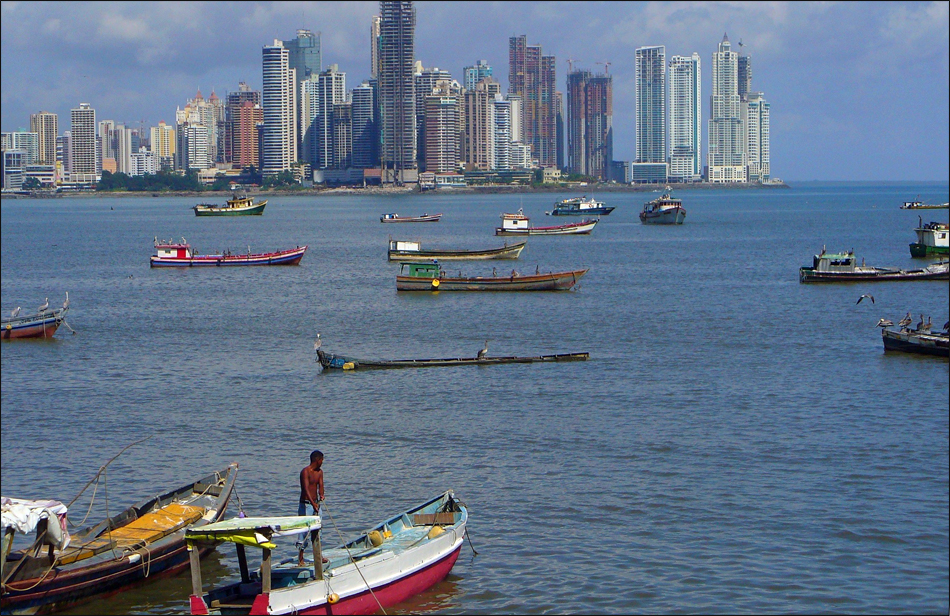
Photo © Keith Schneider / Circle of Blue Seafood is a specialty in Panama, especially at the market in Panama City, which is supplied by these fishing boats.
PANAMA CITY, Panama — The Spanish explorer Vasco Núñez de Balboa was so inspired by Christopher Columbus’s four voyages to the New World, including Columbus’s last trip to Central America in 1502, that Balboa undertook his own expedition.
In 1510, Balboa and his men set ashore in the Caribbean rainforest near present-day Colombia and established Santa María la Antigua del Darién, the first permanent European settlement in the Americas.
Three years later, Balboa, setting out on a search for stores of gold, marched through the rain forest to the summit of Cerro Pechito Parao — in what is today Panama’s magnificent Darién Province — and became the first European to see the Pacific Ocean.
For 91 years a heroic statue of Balboa that recreates his claim to the Pacific for the Spanish crown has occupied an iconic spot along Balboa Avenue, Panama City’s impressive Pacific shoreline drive. The statue — in one hand a scepter outstretched like a cross while the other clutches his nation’s flag — emphasizes a central idea about Panama: A Spaniard is the nation’s principal hero.
Indeed, until December 31, 1999, when Panama gained full control of the Panama Canal from the United States, all of the region’s previous 490 years were largely influenced by governments beyond the isthmus. Spain relinquished its hold after 200 years and the isthmus became part of Colombia. Colombia, in turn, ended its oversight in 1903, when with the help of the United States, which was about to start construction of the famed canal, Panama established itself as a republic.
Panama’s relationship with the United States is, shall we say, complicated. Unlike the allegiance to Spain and Balboa, there are no iconic statues of Americans in prominent public spaces. No statues of Teddy Roosevelt, the American president at the start of canal construction in 1904; or Woodrow Wilson, president at the opening of the canal in 1914; or Jimmy Carter, the president who initiated the process of turning over the canal to Panama in 1977; or George H. W. Bush, the president who launched the 1989 invasion that pushed Manuel Noriega and the generation-old military dictatorship from power.
It’s not that Panama shows America the back of its hand. It doesn’t. Americans retire here in droves now. Panamanians are warm and very much interested in American visitors. Hundreds of thousands of U.S. troops were stationed in Panama to protect the Panama Canal during World War Two. Hundreds of thousands more transited the canal in troop carriers and other Navy vessels to take on the Japanese in the Asian theater.
By and large Panama also recognizes the contemporary value of the United States – a country responsible for two thirds of the cargo that transits the canal — to the logistics infrastructure investments that are the foundation of the remarkable 10 percent annual GDP growth that has unfolded here over the last decade.
Still, there’s unease in the relationship between Panama and the United States. Psychologists and anthropologists would certainly suggest that America’s by-the-book and often stern military management of the canal for 86 years stretched Panama’s patience with colonialism. A clash over flying the Panamanian flag in the canal zone early in 1964 prompted three days of fighting that left 21 Panamanians and four Americans dead. There’s lingering resentment over the number of civilian deaths and the damage sustained by Panama City during the 1989 U.S invasion.
It’s these influences, no doubt, and something more that underlies what Panamanians now think about their former landlord. There’s an unmistakable and understandable chip on Panama’s shoulder today. Freed for the first time from diplomatic and military influences of a foreign government, Panama is proving to itself that it is capable of managing a modern government. It is building a magnificent global city. And Panama is capably operating a vital revenue-producing maritime trade route.
Panama, in short, is a country unleashed with a fervor and approach matched by few other developing nations. Its waters are clean. Half of Panama’s natural forests are still standing. The air is clear. Incomes, home values, and business starts are rising. The rate of unemployment is among the lowest in the world. Panama also succeeded in keeping out of its borders the heavy production and trafficking of narcotics that make its neighbors Guatemala, Honduras, and El Salvador so dangerous.
The result is that this small nation of 3.9 million people has an opportunity to do something rare — develop an operating system that fits the conditions of this time and this place. Panama has a real chance to build the commercial eco-paradise that people here talk about, a nation that respects the land, the water, the law, and its people. TIP — This is Panama.
A Nation of Unusual Quality
During a month of travel and reporting in Panama, a number of other characteristic TIP traits emerged:
Warmth and Honesty — Panamanians that I encountered were universally engaging, candid, and trustworthy in every way. Waiters, shopkeepers, drivers, bystanders, hotel personnel, strangers — all were so helpful in translating, finding directions, making change, assisting with SIM cards, you name it.
One evening, while exercising in the seaside park along Avenida Balboa in Panama City, my cellphone dropped from the side pocket of my shorts. I discovered it missing an hour later as I approached my hotel, rushed back to the park, couldn’t find it, and beat myself up silently for doing such a dumb thing. I was upset enough not to want to talk to anybody, even Gabrielle, who was with a friend out of town. The next morning the hotel phone in my room rang. It was Gabrielle. “Did you lose your phone?” she asked. “You didn’t call me.” She paused. “Well somebody found it.” A woman named Ilma picked up the phone, dialed Gabrielle’s number, and made arrangements for me to retrieve the phone at a restaurant near the airport, after her morning at church. Ilma and her husband showed up at the appointed hour, handed me the phone, and refused to accept anything from me other than a smile and a hug in gratitude. TIP — This is Panama.
Corruption Probe — Honesty also is coming to be embedded in government. Panama’s new president, Juan Carlos Varela, is investigating and prosecuting members of the previous government, including former President Ricardo Martinelli, for corruption. Martinelli and his aides are suspected of stealing billions of dollars. Varela’s investigation is the most extensive in Panama’s history and a clear signal of his government’s intent to set new standards of conduct. Panamanians, who’d grown accustomed to endemic graft and skimming, are pleased about Varela’s probe, amused that Martinelli is squirming, and note how the change in practices has reached the grassroots. Several Panama drivers told me that they no longer bribe traffic police to forgive violations. Cops get offended. An offered bribe can lead to arrest and much more serious prosecution.
Good Medical Care — Healthcare is excellent and much less expensive than in the United States. An orthodontist we met told us a procedure that involves surgery, priced at upwards of $US 20,000 in American clinics, cost $US 7,000 in Panama. One evening over beer, while celebrating the return of my cellphone, two new friends, Debby Osborn and Wayne Hattingh, described their incredibly good experience with Panama’s healthcare system. The two are South African sailors who’ve crossed the Atlantic in their sailboat four times. They earn their keep crewing charter sailboat trips in the Caribbean. Between cruises they chill in Panama City. Debbie was admitted for nine days with anemia in a city teaching hospital. The staff, she said, couldn’t have been more attentive. The food was good. The hospital administrator personally visited her to check on Debbie’s care and progress. Debbie was discharged fully recovered. Wayne received an envelope containing the bill. He blinked. $US 48. “I paid it straightaway,” he joked, “before they realized it was missing a few zeros.” TIP — This Panama.
Contrasts — Panama’s Pacific side is dry five months a year. It rains almost daily on the Caribbean side. The western region close to Costa Rica is a feast of tall mountains, endless vistas, and easy border crossings. The eastern region is a biologically rich jungle so impenetrable that the only way to reach Colombia is by air, water, or on foot across difficult rainforest trails.
Still, none of Panama’s myriad contrasts is more stark than the difference between Panama City and Colon, which lie on either entrance to the Panama Canal, just 80 kilometers (50 miles) apart. One is a safe and prosperous capital with a brand new subway. Elevated highways race through downtown and across Pacific tidal flats. Panama City is full of architecturally daring office and residential towers. Colon couldn’t be more different. Colon is a dangerous, deteriorated Caribbean city full of menacing gangs, squatters, and crumbling colonial-era buildings. Colon voters typically support the presidential candidate considered the underdog. In the past several elections the underdogs won. Panama is now wealthy enough for President Varela, the latest of those victorious underdogs, to invest in Colon’s revival.
Dance — We were treated to two performances of traditional Panamanian dance. The first occurred at Quebrada Ancha, a village near the center of the Panama Canal watershed. Girls wore long and colorful skirts and ornate beaded hair pieces. Boys wore sandals, jeans cut to the calf, white shirts, and straw hats. They gracefully stepped in straight lines, twirled in tight knots, and swirled in sweeping circles.
In Panama City we attended a performance by professionals accompanied by drummers and an accordion player. In those dances the fuller measure of traditional Panama dances was revealed. Just as in Ancha, the dances are studies in Spanish-influenced bright colors, elegance, and fluid movement. The adult dancers add romance and sexual tension. Good footwork is essential for male dancers responsible for deep bends, fast-chattering feet, and outstretched arms beseeching attention. Female dancers, their dark hair gleaming, dark eyes aglow, and wearing the incomparably beautiful pollera embroidered blouse and full length cotton skirt, flow in long strides embellished with fetching hip movements. The beat of the music keeps the dancers in constant motion, like one of Panama’s young and urgent mountain rivers. TIP — This is Panama.
Ambassador for Panama — My reporting in Panama couldn’t have been more effective and efficient thanks to Panama’s great civilian tourist and trade ambassador, Jaime Figueroa. Youthful and exuberant about his country, Jaime is a bilingual Panama native who lives in the home his father, a physician, built in Panama City. His mother, brother, and his beautiful and funny wife, Mayin, live there, too. Educated in New England and Nebraska, Jaime (pronounced HIGH-may) is a business executive who spent a good bit of his career traveling the world for IBM and the telecoms industry. He now makes his way brokering business and real estate opportunities for global buyers, and promoting the vibrant nation that is emerging in Panama. Jaime writes several columns about his country’s prospects for Panama City news organizations.
Most significantly, Jaime knows everybody — the top executives at the Panama Canal Authority, the government officers at the Panama White House, bankers and artists and doctors and police officials. His contact list is endless. When traveling from one interview that Jaime set up to the next, his phone doesn’t stop ringing. A maven on Panama’s history, Jaime led a group to the summit of Cerro Pechito Parao in 2013 to mark the 500th anniversary of Balboa’s Pacific discovery. He was knighted by the Spanish crown for his allegiance to Spain’s role in Panama’s culture and identity. He’s interested in becoming Panama’s Minister of Tourism. But a cousin, Lupe Ellis, thinks that’s the wrong role for Jaime. “He’s pure now,” she told me. “That’s why he’s so effective. He needs to remain pure.”
Incredible Light — It’s magnificently warm and breezy on Panama’s Pacific coast from December to April. Strolling on Panama City’s seaside boulevard in late morning is a festival of blue sky. The soft air is like a kiss on the back of your neck. On the Caribbean side the rain falls in heavy drops the size of hail. In the western mountains clouds form afternoon mists that the sun lights in banquets of colorful rainbows. Still, the most extraordinary aspect of Panama at this time of year is the rich, warm, almost amber light of early morning. The angle of the tropical sun bends light in ways that highlight the deeper oranges and yellows. The effect on Panama’s green countryside and blue waters is otherworldly. Trees take on new shapes and textures. Fields jump alive in deeper greens and browns. The Pacific and inland waters are so blue they look as though they were plugged in. The display of post-dawn color and light, all encompassing and exquisite, just takes your breath away.
TIP — This is Panama.
— Keith Schneider, senior editor
Circle of Blue’s senior editor and chief correspondent based in Traverse City, Michigan. He has reported on the contest for energy, food, and water in the era of climate change from six continents. Contact
Keith Schneider

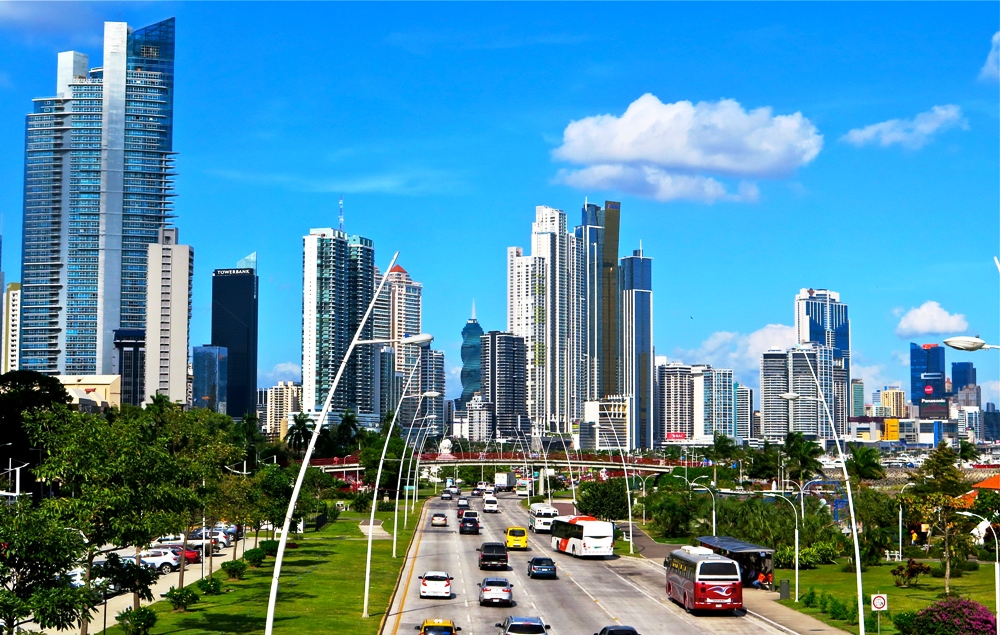
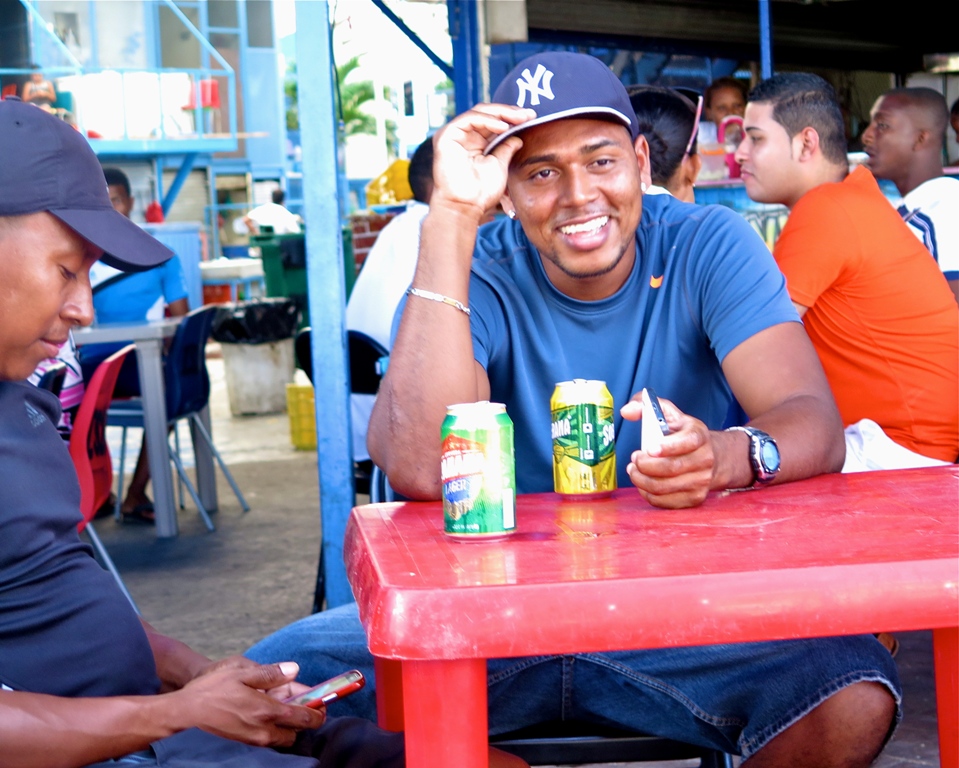
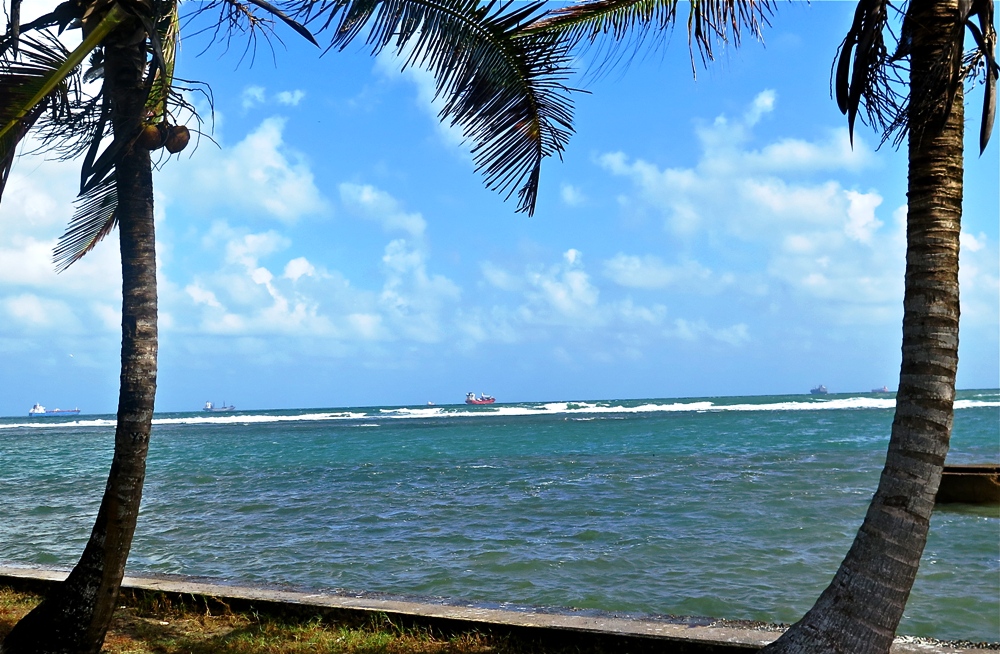
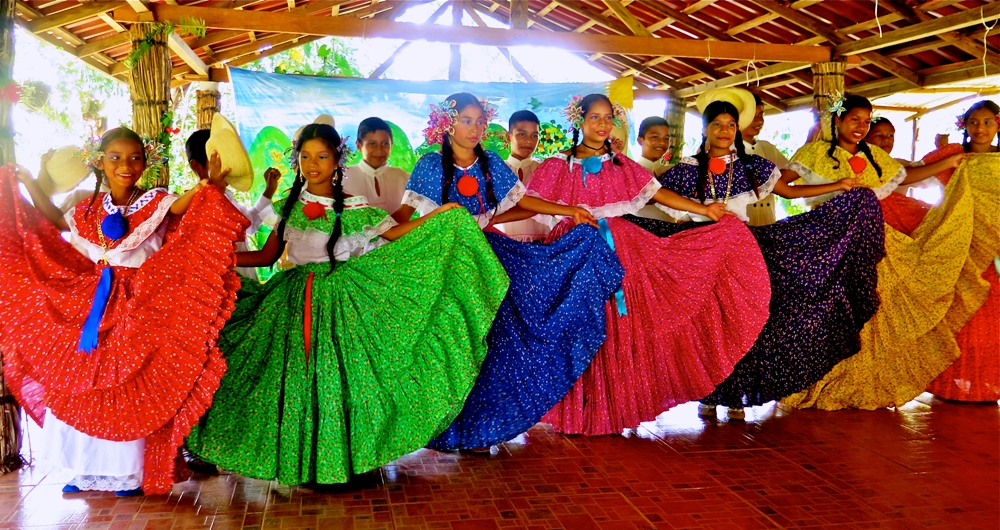
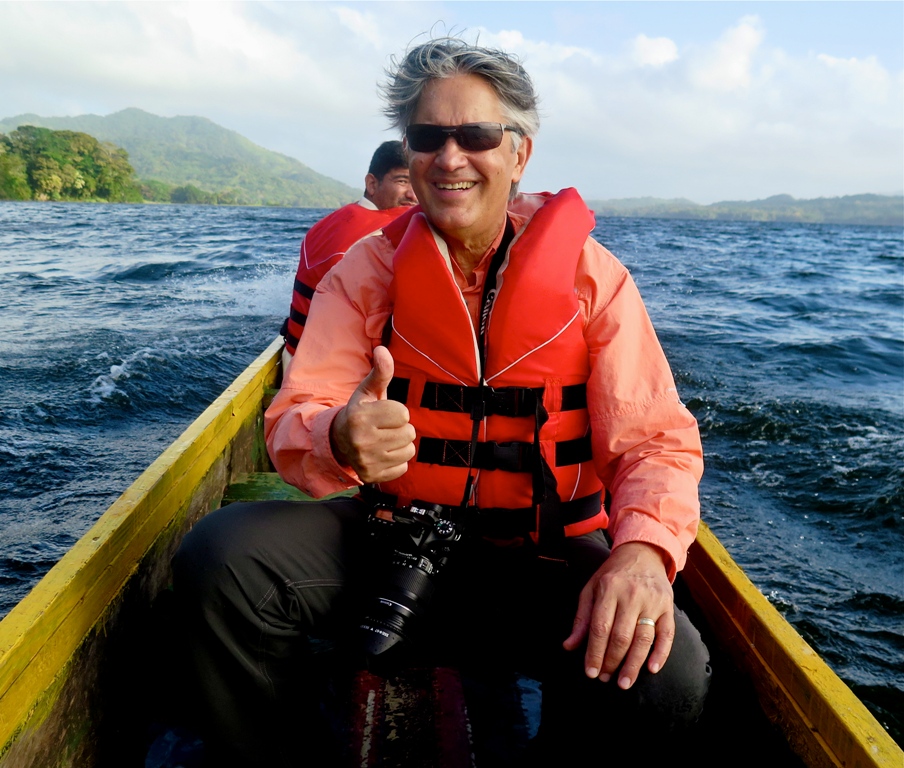
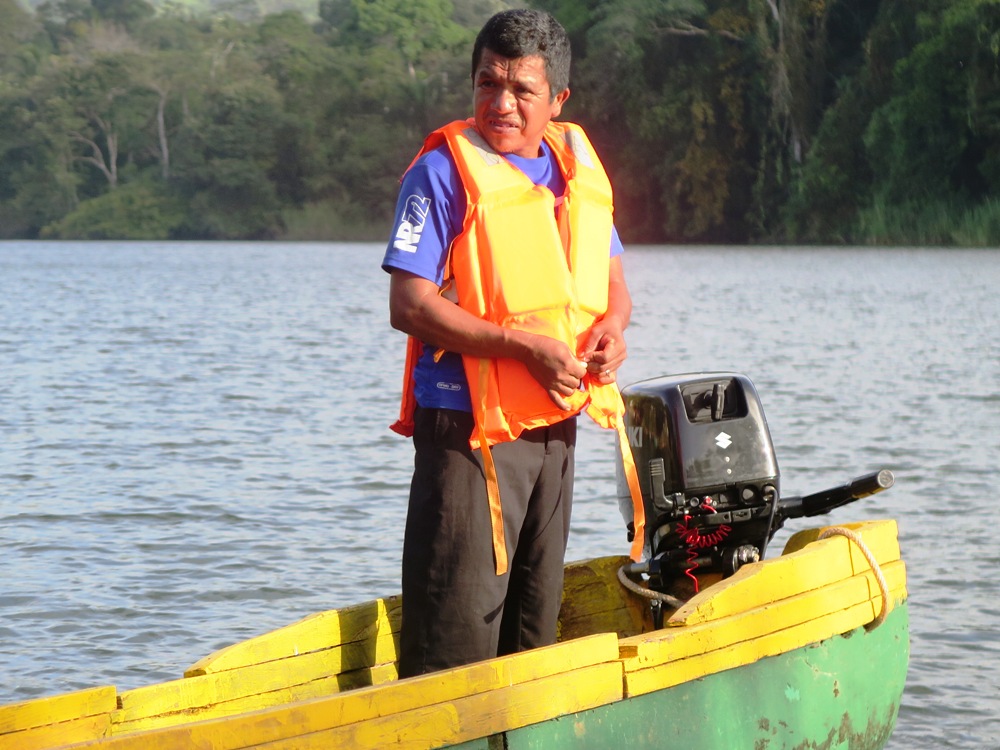
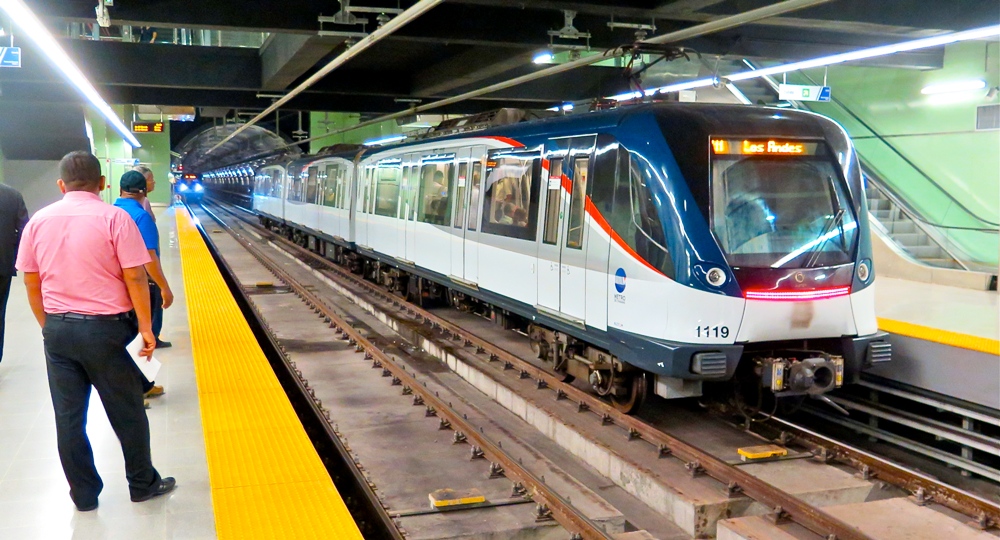
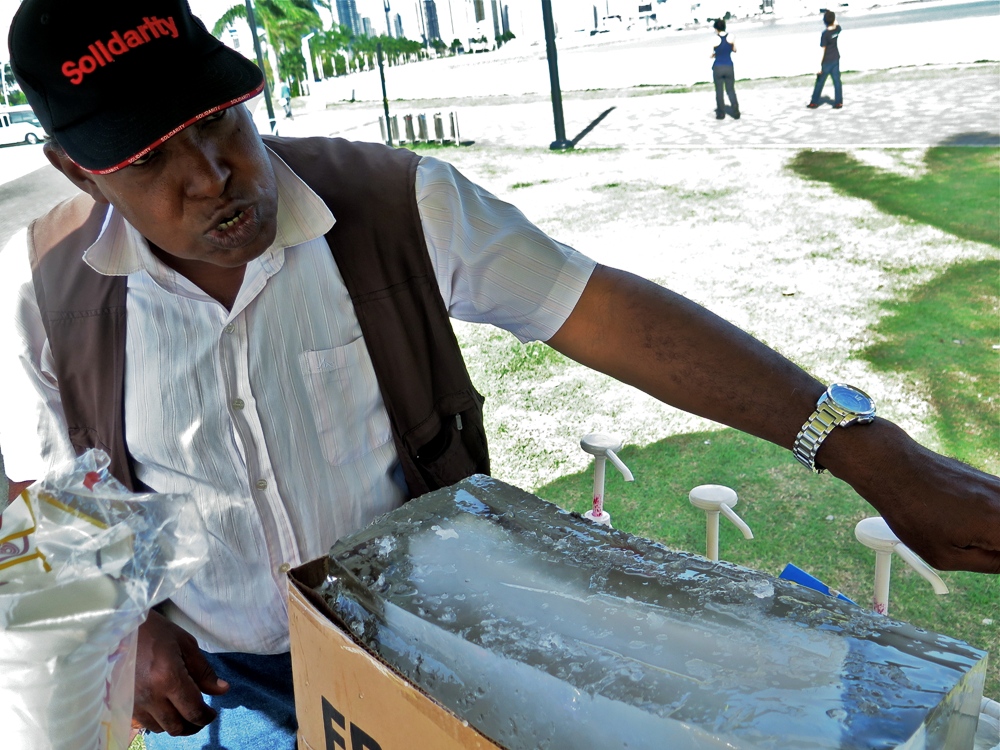

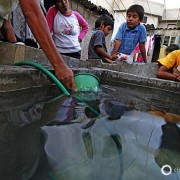

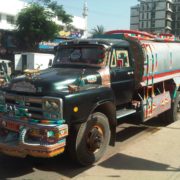
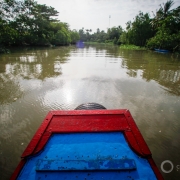


Leave a Reply
Want to join the discussion?Feel free to contribute!